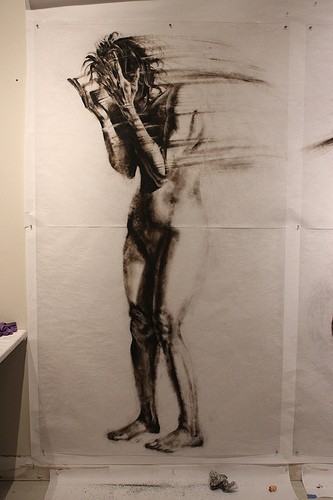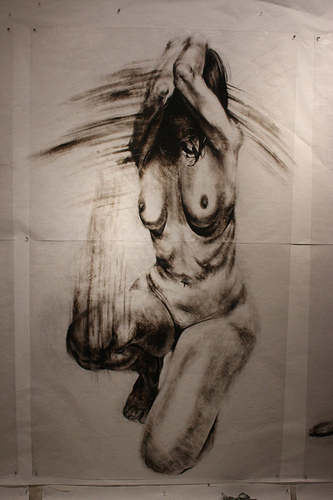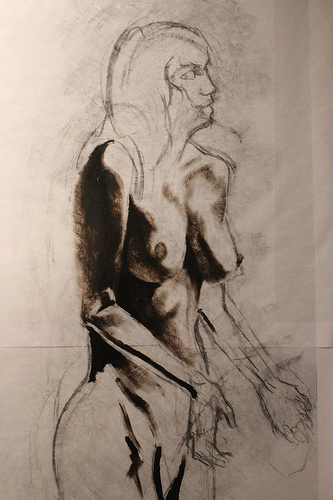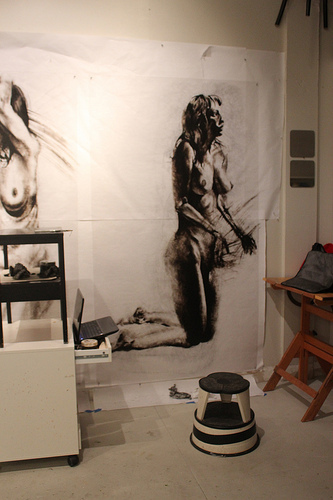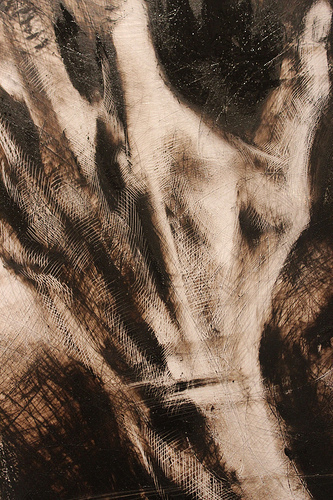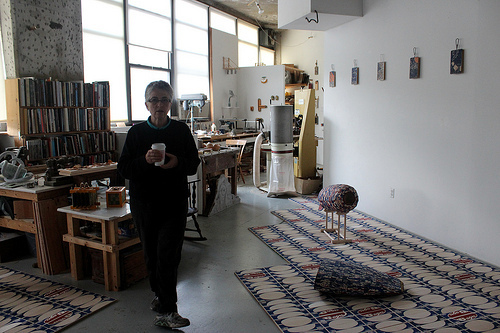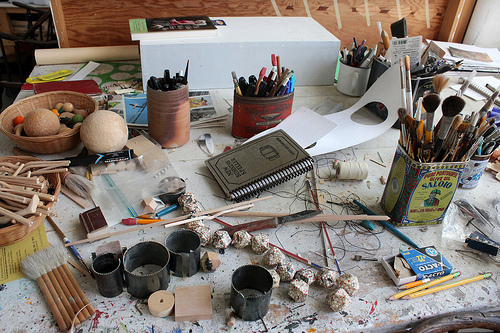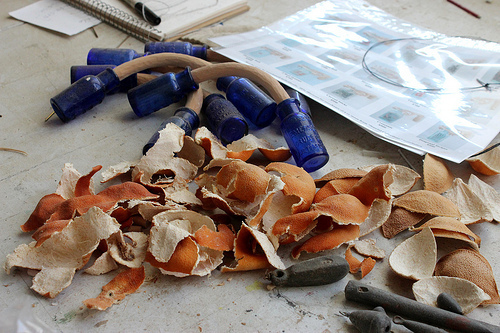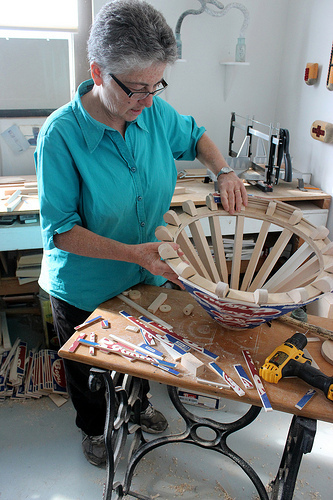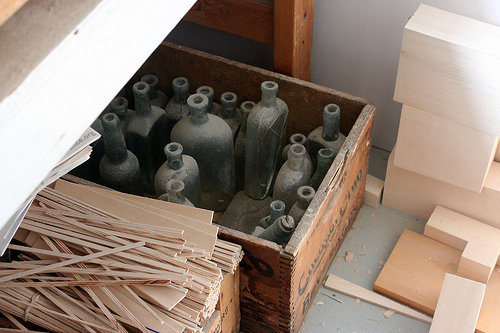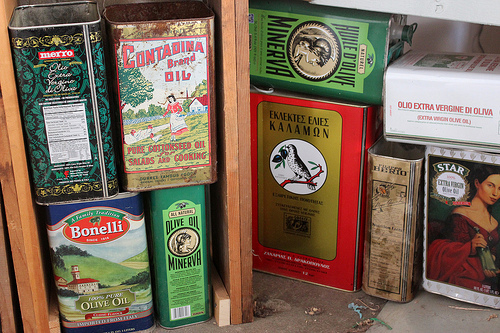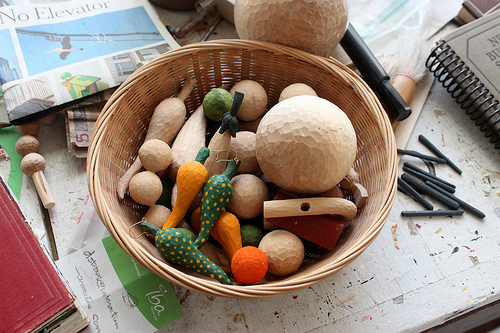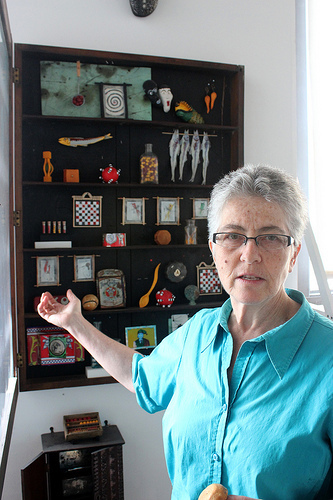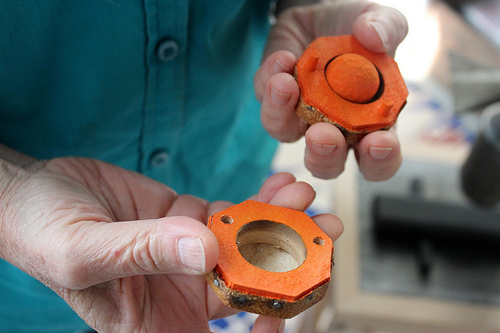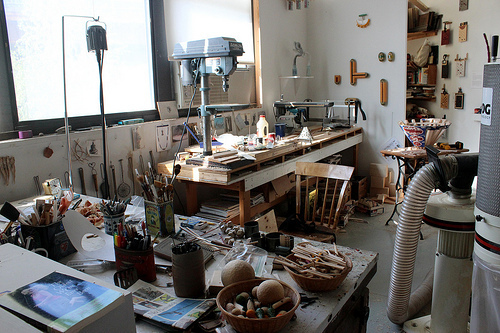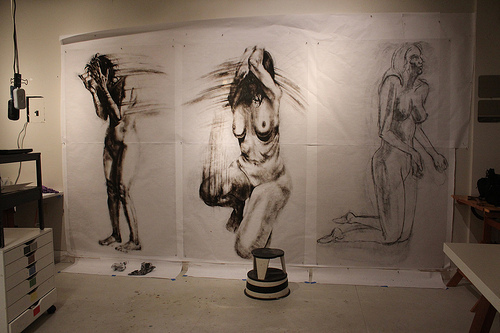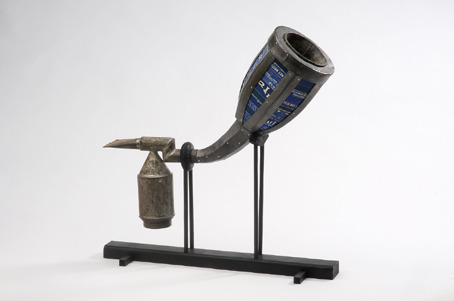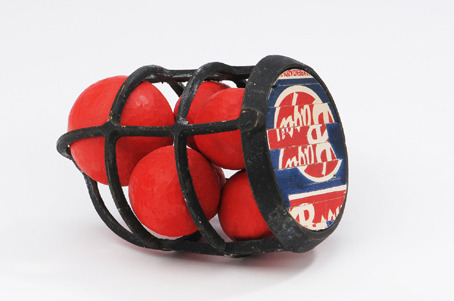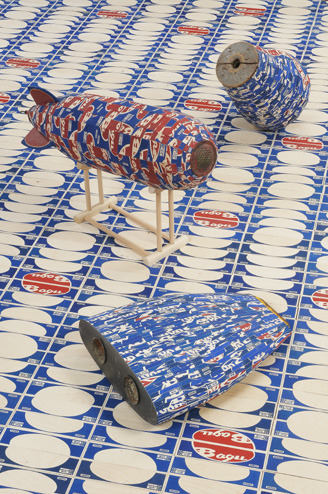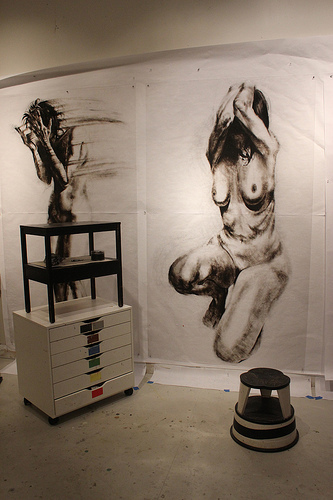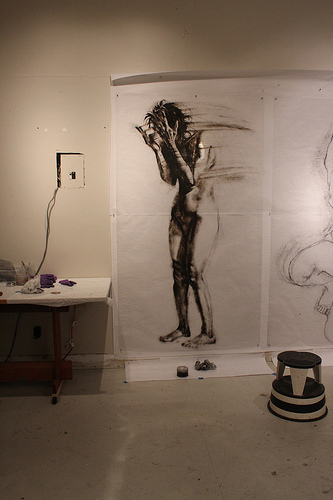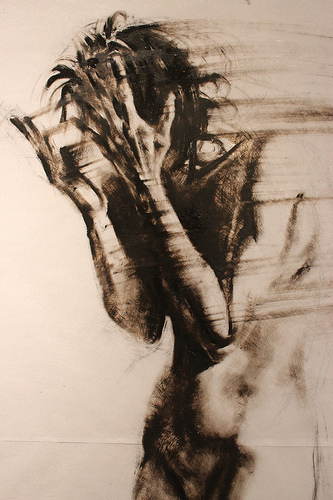Clara Lieu's Blog, page 44
October 5, 2013
Self-Critique
Something’s not quite right with these drawings. I completed all of the finishing touches to both of these drawings the other day, adding cross-hatching with an x-acto knife and other passages with lithographic crayon. Technically speaking, they’re as resolved as they’re going to get in terms of articulating the form and details. To critique myself, I feel like the drawings are too sparse and empty, they lack the emotional intensity that I’m looking to achieve. They’re too clean and accurate. I had thought initially that the figure alone would be enough to activate the composition, but clearly it’s not. I feel like all I’m doing is rendering the figure realistically and then adding motion lines on top, really not very interesting when I think about it.
I’m thinking that I have to stop and re-evaluate where I’m going with these drawings. I just can’t see myself proceeding with the next 48 drawings in this way. My next step will be to print out photographs of these drawings so that I can draw on them and experiment with other options.


October 3, 2013
Ask the Art Professor: How Do You Balance a Full-Time Job, Kids and Your Own Art?
“I work full-time as a designer and part-time on my own artistic endeavors. My husband and I are both passionate about art. We want to have kids, but I am afraid that doing so will take away time from my own artistic endeavors. How do you balance a full-time job, kids and your own art?”
Since I’ve had children, I see my life as divided up into two periods: “before kids,” and, “after kids.”
“Before kids,” I was in my early 20s and struggling with the transition from school into the “real world.” I had trouble motivating myself. Finding time for art on top of a full-time job felt nearly impossible. I never seemed to have what I needed: I didn’t have a studio space, art supplies were costly, etc. Coming right out of college, I was initially shocked at how difficult it was to sustain an independent studio practice on top of a full-time job.
Then, after I finally attained some level of balance and resolve to all those issues, I became pregnant. The transition began even before my first child arrived. Concerned over the potential hazard of chemicals and fumes, I was forced to drop oil painting and printmaking altogether.
For the first six months after my baby was born, I was such an emotional and physical disaster that I literally couldn’t do anything but eat, sleep, watch television and take care of my baby. I didn’t make any art for almost an entire year. I could barely think straight. At the time, I was terrified that I would never make art again.
Eventually, I did get myself back on track in very slow, incremental steps. Two years passed before I was able to assume my “normal” rate of productivity.
Successfully balancing a full-time job, kids and your art is all about various forms of sacrifice. This balance is a work in progress that I still constantly troubleshoot and experiment with. I allocate my time and concentration so that each pursuit essentially takes turns being compromised. There are the practical challenges, and then there are the mental challenges. Each are tough to deal with for different reasons.
Logistically speaking, time management is the most difficult practical issue. I spend my days hunting for small pockets of free time to work on my art. To make time and mental space for my artistic pursuits, I do things that I would have previously considered unthinkable. It means waking up at 4 a.m. to squeeze in two hours of work before the rest of my family wakes up, or dragging myself to the studio at night after a long day at work. It means writing those artist grant applications at home during the day, while my kids laugh hysterically over the balloons they’re playing with.
Time alone to work has become the most precious thing in the entire world to me. When the babysitter arrives, I have only a two-hour window, so I tell myself, “You have absolutely no choice but to make things happen with your work.” Now, each time I’m in the studio, it feels like an emergency situation where every minute matters. I used to start each studio session by sitting at my computer, checking email, doing some research for my work and eventually I would let myself wander over to working on the actual artwork itself. My current routine? Dump my bag on my desk, grab my box of tools and immediately dig right in, no matter how uninspired I’m feeling. On those early mornings, I splash cold water on my face, I suck it up and get to work. I do whatever it takes.
The mental juggling is the other half of the battle, and in many ways the most difficult of all. I have to be able to mentally switch gears at a moment’s notice, changing my role from mother, to teacher, to artist multiple times as I go through my day. I find that my mind is always in more than one place, making it hard to stay in the present when I need to. I can never quite get it right either. If I’m with my kids, I’m thinking about my artwork and vice versa. It’s a constant state of distraction that I’ve had to learn to live with.
Everything changes when you have kids, sometimes in the most unexpected, wonderful ways. I especially see changes in my creative process. After leaving oil painting and printmaking behind, I discovered a new passion for drawing and have never looked back. I’ve become noticeably more efficient and direct as a result in both my thinking and the physical making of art. I don’t fuss or meander the way I used to. I’ve disciplined myself to distill my artistic intentions, addressing only what’s most critical. I get right to the point — anything else is a waste of my time.
Another surprise is my new role as a writer since I’ve had kids. Initially, I was looking for something that was intellectually stimulating and related to my art, which I could work on at home while watching the kids. I never thought about myself as a writer until I started blogging and eventually wrote a book. What started as a way to simply fend off boredom while I was at home has turned into a thrilling, new profession for me.
Being a parent is the world’s most intense roller coaster ride, hurtling you into the great unknown every minute. Combine that with the trials of being an artist, and you feel like the most dramatic forces in the universe are slamming you all at once.
I do believe that you can have it all: family, friends, job, art, etc. You just can’t have it all at once. Figure out what is most important at the moment and keep the rest on the back burner. Expect your priorities to be continually shifting all the time.
Ask the Art Professor is a weekly advice column for visual artists featured in the Huffington Post. Submit your questions to me at clara(at)claralieu.com
Related articles:
“What do you do for art storage?”
“How can an artist balance their life?”
“How can an artist overcome their financial issues?”
“How can an artist create an artistic group outside of school?”


October 2, 2013
Interview with Sara Bloem
Today’s interview is with Sara Bloem, who is a former student of mine, and a recent graduate of RISD. Sara and I are collaborating on my new book “Drawing Thoughts.” (a working title) I had the chance to sit down and chat with her last night about her new life as a young art professional, our collaboration, and her new work.
CL: You recently graduated from RISD this past spring, how has post graduation life been for you so far?
SB: It’s been good. I’ve found it to be a bit of a whirlwind. Things aren’t as predictable as they were in school. You really have no idea if anything is going to work until it does. That goes for apartment, moving, job, etc.
CL: You really never know until you try! What is your daily life like? How are you able to fit time in for your artwork?
SB: On a weekday I get up around 7:30am, make breakfast and lunch, and get on the subway for my 40 minute commute. Work is from 10am to 6pm, so the earliest I get back home is 6:45pm or so. I always cook when I get home because I eat PB&J for lunch (junior designer salary), so it’s not until 8pm that I’m usually done with that and have time to brainstorm. I have to go to sleep by 11:30 so I’m well-rested for work the next day.
CL: I guess those all-nighters from art school are gone for good.
SB: They really are. Things are so regular now, whereas in art school my schedule completely depended on what projects I had going on that week. Now I kind of have to structure my life around my job.
CL: Do you miss art school?
SB: I miss art school tremendously.
CL: In what way? What do you miss the most?
SB: I miss the fellow artists, and I miss having time to make work. Without other artists around you, being an artist can seem so crazy! No one around you understands that urge to make. And with regard to the latter – you have so much time to make in art school. It’s really amazing.
CL: It certainly can very isolating after school; it’s such an abrupt change to go from being so overly saturated with creative people to almost nothing. Have you found ways to create your own artistic community?
SB: One of my housemates is a fellow 2013 RISD graduate and that helps a lot. I specifically wanted to live with someone from RISD and I’m so glad that my housemate understands me.
CL: Let’s talk about our collaboration on my next book, which has the working title “Drawing Thoughts.” I’m going to be documenting a series of drawings that you’re working on from start to finish, with you writing journal entries the whole way through. How do you feel about the project so far? I know you’ve just barely started.
SB: I love the opportunity to work with you on this book. It’s also an opportunity to be very vulnerable, which is a new experience.
CL: In what way do you feel vulnerable?
SB: Sharing my journal entries with a professor I respect, like you, can be pretty nerve-wracking. I’ve never kept a journal specifically related to art making. I guess I’ve realized that many of my thoughts while making sound totally neurotic. Even though I really enjoy the making process a lot.
CL: That certainly is a level of exposure that many artists never exhibit publicly.
SB: Art is very personal to begin with, and then documenting the mental journey is more personal still. I think, professionally, most fine artists try to keep their personal life out when they present their work, and it feels very bold to go in the opposite direction.
CL: I’m hoping that this is what will make the book unique, that it will document all of the emotional trials and tribulations of the artistic process. Art history books never get into that.
SB: Yes, that’s what makes the premise so great. It’s intense.
CL: I’m very excited to work with you in this capacity. It’s amazing what we went through together at RISD, having you in your first semester as a freshman, being my teaching assistant for three semesters, and then doing the independent study in your final semester. That independent study seems like it’s the perfect segue into this book project. Are you thinking of essentially picking up from where you left off?
SB: I’m incredibly excited too. I do want to pick up from where I left off. I don’t want to necessarily stylistically match the pieces I made last semester, the forms will develop from my artistic research.
But in terms of content, I think there are themes that I worked on with you in my very first semester of RISD that will be making an appearance again.
CL: Isn’t that amazing how ideas can emerge again many years later?
SB: It’s the best. It feels like you’re getting to know yourself, at last.
CL: What kind of themes were you working with during your freshman year?
SB: Family and how family intersects with foreign cultures; how cultures and families come together and pull apart.
CL: Lastly, what advice would you give to current art school students?
SB: Don’t worry about doing things the “right” way while you’re in school. Pursue what fascinates you. Don’t be afraid to forge your own path. A lot of my friends – even from other departments – felt pressure while they were in school, like they weren’t “Industrial Design-y” enough for the Industrial Design department or something like that. Outside of school those boundaries have no meaning, so don’t waste time on trying to be correct.


October 1, 2013
Still Questioning
This third figure that I’ve been working on has been giving me all sorts of grief. I must have redrawn it about 8 or 9 times in vine charcoal. Then when I came into the studio last night it was clear that the proportions were way off, so I spent all last night trying to nail it again in the vine charcoal. Eventually, I did get it to where I wanted it to be so I proceeded right away with the etching ink.
I have to admit to myself that I’m still feeling uneasy about these drawings. Perhaps I’m not being gestural enough, perhaps the scale is still intimidating me somewhat, I’m not totally certain. I’m telling myself that I just have to keep working and push ahead. My theory is that I’m judging myself prematurely which is leading to all sorts of questioning which I think is undermining my ability to be confident in my marks. I’m going to work on trying to turn my brain off and just enjoy the process of drawing.
The etching ink dried on the first two figures so I started going in with lithographic crayon and scratching away with the x-acto knife. It felt great, I feel like I was able to clean up a lot of muddled areas that needed much more definition in the form.


September 30, 2013
Jessica Straus’ studio
Visiting artist studios is one of my favorite activities. The studios are so revealing about the inner workings of an artist’s mind. I feel inspired and artistically energized any time I visit an artist studio. I’ve had great conversations with artists about their work when I visited their studios that I’ve found extremely informative and influential in my own work.
I visited my friend Jessica Straus’ studio in the Brickbottom Artist’s Association, an enormous artist complex in Somerville, MA with well over 80 artist studios. I’ve known Jessica for many years now, but oddly enough, this is the first time I’ve ever set foot into her studio. Jessica has been in this studio for over twenty years. Jessica’s studio is a visual feast of objects, and it was incredible to get to see her various collections of objects, tools, machines, and works that have accumulated over the years.
I’ve been familiar with Jessica’s work for some time now, and I’ve always been fascinated by the way that she finds innovative uses for items and objects that most of us would just see as ordinary and disposable. Her upcoming solo exhibition, “Scrap!” at the Boston Sculptor’s Gallery, which opens October 9, deals with the idea of using every piece of from an object. In this case she’s been working with clementine crates. She’s been collecting clementine crates in her basement for years, and it was only when she decided to throw them out that she decided to do something with the crates artistically.
Some of the most interesting objects in her studio were the objects that she has been toying with, but haven’t come to full fruition yet into finished works. Talking to her about her work, I could see that she was brimming with too many ideas, a great “problem” to have as an artist! I was particularly intrigued by these clementine peels that she’s been peeling, collecting, and flattening. When hammered to a piece of wood, the clementine peels really have the appearance of animal skin, with their texture and color. It was amazing the way that she transformed the clementine peel into something else.
I was struck by how tedious many of her works were to build and assemble. This piece in the photograph below had to have strips of clementine crates individually beveled and cut on all sides in order to fit into framework of the piece. Jessica is a master of fitting objects and materials together, she seems to know just how to physically merge objects together. What’s fascinating about her work too is how it is precise but not precise at the same time. Analyzing her sculptures up close you can see the mark of her hand, and yet simultaneously the works are so immaculately crafted that they appear to be flawless at first glance.
In addition to clementine crates, she’s created a gigantic collection of old glass bottles. As I walked throughout her studio, I could see boxes of these bottles peeking out in multiple corners underneath tables and packed into closets and corners.
Another collection that I was fascinated by was a bunch of olive oil cans, which she’s been collecting for over 40 years. Every time she buys olive oil, it’s always in a can. Her friends know she collects them, and thus she has received many cans from others in the past as well. The designs, colors, patterns are so striking and beautiful, and very diverse at the same time.
These pieces on the wall in the photograph below are constructed from phone book pages.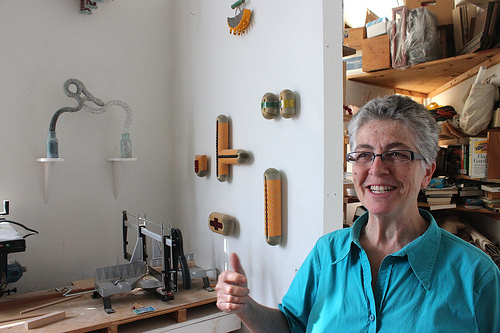
I enjoyed discovering the smallest objects in her studio, little pieces that she’s whittled and then painted. Below in this photograph there’s a set of polka-dotted earrings that are carved by hand.
In the photograph below is one of my favorite corners of her studio, a sort of “cabinet of curiosities”, filled with smaller works and objects that she’s made over the years. She rotates the display with different pieces frequently, so the line up is always changing.
A close up of one of the objects from the cabinet is in the photograph below.
You can see more images of my studio visit with Jessica here. I also did an interview with her a few posts back that you can read here. To see more of Jessica’s work, visit her website.


September 29, 2013
Artist Publicity Package
Have a show coming up that you’d like to promote? Trying to increase your visibility in your area? Want help with social media and networking? Need to write a press release?
I am now offering publicity packages for visual artists, starting at $200. Please email me at clara(at)claralieu.com to get an estimate or more information.


September 28, 2013
Questioning
Now that I’m finally deep in the trenches with the etching ink, I’ve started to question some of the choices I’ve been making. For example, I like the motion lines in the figure on the left hand side, but I don’t like the motion lines on the figure in the middle. I wonder if it’s because the motion lines look too sparse and controlled? Perhaps I need many more of them to make it feel more substantial? I’m not sure, I think I’m going to leave that figure alone for a little while so I can think about it. It just feels too clean to me right now.
I struggled with the sketching of the figure on the right for a while, it’s a tough pose to fit into the shape of the Dura-Lar. I must have redrawn it 8 or 9 times in vine charcoal. Looking at it now, the pose feels stiff to me and the feet are too small, so I will likely scrap it and start over again.


September 27, 2013
Interview with sculptor Jessica Straus
A few days ago I got to sit down and talk with Jessica Straus, a former colleague of mine and a sculptor from the Boston area. Jessica and I met at my very first job out of graduate school, when I did a sabbatical replacement position at Concord Academy. I was teaching painting and drawing, while Jessica taught sculpture and drawing. I have great memories of seeing and being inspired by the projects her students worked on and walking downstairs to her studio any time I needed good, sound advice about teaching and art. To this day, she’s been a source of continued artistic inspiration for me in my artwork.
Jessica has a solo exhibition opening at the Boston Sculptor’s Gallery opening on October 9, with an artist’s opening reception on Saturday, Oct. 19 from 4-6pm. You can read more about her and see more of her work on her website.
CL: In your sculpture, you work with everything from found objects, hand carved and/or painted pieces, machine cut pieces, etc. What fascinates me about your work is this diversity of materials that you work with and how you balance them together. How do you manage to merge contrasting materials into a cohesive whole? What kinds of connections do you make in between the materials?
JS: Well, I think the way I work with the wood is consistent from one piece to the next, and one body of work to the next. I always show the workmanship of my hands in my pieces. One can see the chip by chip carving, or in the case of the current work, one can see that each piece is cut very individually, definitely not precision cut, even though the whole appearance is neat and well crafted, there’s the mark of the maker on everything I do. Andin the case of these silk screened panels (the facsimiles of labels) I made a point of shifting the ink color many times to emphasize that they are NOT mass produced.
CL: Those slight idiosyncrasies, minor flaws, and “imperfections” can be so revealing and wonderful to look at. They really demonstrate the hand of the artist in every work. How do you find your found objects? How do you know they’re worth holding on to?
JS: I always keep my eye out for interesting forms in antique stores & yard sales. I guess I have several criteria for what I select. Pretty much everything I put together there’s an emphasis on friction fitting when I join my wood parts the metal (and I usually use metal) objects. So I look for things with good orifices through which wood pieces can be attached.
CL: I love that in many cases in your work we have no idea what the original purpose of the object was. I find myself thinking about what the object was before it came to be a part of your work and what its history was.
JS: I also look for forms which suggest several possibilities for function–things that look vaguely familiar, but you can’t quite place them–that’s the overall feeling I’m going for in my finished work. I also enjoy taking a familiar, ordinary form and taking it so out of context that it is no longer recognizable, but seems like it serves some new “believable” purpose.
CL: How did you learn to work with wood? For those of us who don’t have experience with it, wood seems like such an unfriendly material at first.
JS: Ah! I am totally self-taught with wood. I got two degrees in ceramics and then totally abandoned the material that I was trained up in and started working with wood. I think the fact that my skills are limited has forced me to be more inventive. I have become a good problem solver and that has served me well.
CL: There is something to be said about learning about a material from scratch on your own, it provides a very different kind of path.
JS: The fact is I always loved wood–even as a very little kid I started to whittle. (My mother was very indulgent of this–and unafraid of knives), probably because her father (who I never knew) was a superb amateur wood carver–so she grew up with this. I’ve even been told that I had a great, great grandfather who was the last wooden shoe maker in his village in France–so I like to think it’s in my genes! Yes, sometimes I rue the fact that I didn’t have real training and that there’s so many more skills that I could have, but I think my old-fashioned skills give my work a certain look.
And apropos of that, I am very attracted to objects and modes of working that are just passing out of current usage. I am interested in forms and working methods that are at a transition point, the point where they are about to become or have recently become obsolete. Thus the silk screened wooden clementine crate labels; just last winter, as I was beginning this work, my favorite Clementine producer switched their packaging to digitally produced labels printed on paper. It was like it was too good to be true that you could get these beautiful little wooden crates every time you bought clementines!
CL: Let’s talk content, how do you come up with the ideas for your pieces?
JS: All different ways. A lot times the object gives me the idea right of the bat, like it’s asking to have a new life. But other times I have sort of a story line I’m pursuing. With the large floor installation (floor covered with a tiled pattern of crate labels with large sculptures sitting on top) I have a really whacky story line. In a nut shell the idea comes from an ongoing conversation I’ve had with my son about preparing for an apocalypse. We do this family game of analyzing our friends or dinner guests in terms of whether they’d be a useful person to have holed up with us in our post apocalyptic bunker. So I was thinking of what skills I had to offer my bunker mates–all I can ever come up with is vegetable gardening and DIY skills–so these pieces are what I’m cranking out in my basement workshop with very little raw material on hand, trying desperately to make useful things. It’s how we can tell if our son really likes one of our friends–after they leave he’ll say, “we should totally have so and so in our bunker” He got a huge kick out of my artist statement/ press release for this show.
CL: That sounds like a great game to play! We are so dependent on so much technology nowadays; it would be interesting to see how differently each of us would function without it. In terms of the people in your life, who has been the most influential in terms of shaping your artistic thinking?
JS: Well, to start with–my mother was very artistic. She was a very traditional “Sunday painter”, so her style was very different than what I have gravitated to, but as a kid she always had art material around and encouraged me to draw and paint side by side with her.
And then I had some terrific teachers in art school–most notably, Ken Ferguson, at Kansas City Art Institute, who was a very renowned ceramic artist.he had a great eye and was a very blunt critic. He also turned me onto what was then called “folk art” back in the early 70′s before anyone else was paying attention to it. And then I got to know sculptor Michael Hall, at the Cranbrook Academy who was also an early discoverer, collector, and scholar of folk /visionary/ outsider art. This was a huge influence.
CL: That early exposure to those genres must have been key to your artistic development.
JS: Hugely! I am obsessively passionate about outsider art and have gone traipsing all over the place in this country and abroad seeking it out, and meeting as many of these untrained artists as I can.
CL: What are the major differences and similarities that you see between the untrained artist and the trained artist?
JS: Similarities: Being unafraid to work in idiosyncratic ways–outside of what is currently fashionable.
And working, working, working single-mindedly on a particular idea. Let’s see–the differences–well for many trained artists I guess they are conscious of cultivating a certain audience, and aware of what the current trends are.
CL: You retired from teaching a few years ago. Aside from the obvious advantages of having more time in the studio, how has this changed your approach to your work?
JS: I now sometimes work on a few different pieces at the same time. And I can try ideas on a whim even if I’m not sure they’ll pan out. I’ve also been traveling quite a bit. Wherever I go I seek out makers and look at how things are constructed and presented.
CL: Do you think you take more risks and are more ambitious in a way? The luxury of time can completely transform our approach to our work.
JS: I am definitely playing around with quirkier approaches. And with this new body of work that I will be showing I’m doing a large floor installation for the first time–I have the time to work larger for sure.


September 26, 2013
Sleep
I’ve been to the studio three nights in a row now, and it feels absolutely terrific. It’s amazing what an incredible impact having this studio has had on my life. It’s affected not just my artistic mindset, but my physical health as well. As many of you know, I have too much energy and at times I have difficulty managing that. With the studio, I’ve been getting out my nervous energy and I’ve been sleeping better at night as a result. My sessions at the studio are short, only about 1.5-2 hours at a time. It actually works well because the etching ink is quite physically demanding on my fingers. I find myself rubbing into the surface of the Dura-Lar with a lot of pressure, so doing a very long session would be tough on my fingers.


September 25, 2013
Determined
I felt really lame that I chickened out on the etching ink the other night. I spent most of my day yesterday trying to mentally gear myself up to dive into the etching ink the next time I returned to the studio. I pumped myself up as I drove to the studio and was determined and ready by the time I arrived to get started. I indulged and let myself start with my favorite part of this particular pose, which in this case was the hands. I knew working on that area was going to be enjoyable to work on, so I started there in order to get myself going.
I forgot how tacky and stiff the etching ink is. You have to exert a lot of physical pressure on the surface of the Dura-Lar to achieve a range of gradients. I also use a cotton rag to remove the ink to lighten the tones. I wear purple nitrile gloves when I work with the etching ink, and by the end of the night the pads of my fingers felt sore and raw.
My short term goal for now is to have these three drawings finished for the Waltham Mills Open Studios, which is on Nov. 2 and 3, mark your calendars! More information on that soon.



